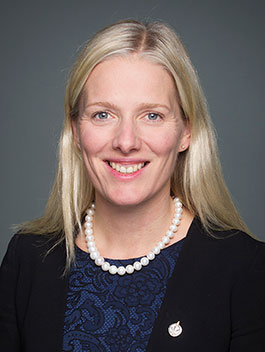Jon Shell, QUOI Media
A recent Bank of Canada report made waves when it revealed that 30 per cent of residential home purchases in the first three months of 2023 were made by investors and not people who intended to occupy those homes. The figure was less than 20 per cent in 2014.
Growth in investor demand is pouring jet fuel on our housing crisis.
Real estate investors have put upward pressure on prices and crowded out first-time homebuyers who, over that same time period, have declined to 42.5 per cent from 50 per cent of home sales.
But while there finally seems to be broad political consensus for an ambitious program to increase the supply of housing in Canada, a comprehensive demand strategy that addresses the overabundance of investors has been conspicuously absent.
This needs to change.
The opportunity is huge. The impact of cutting investors’ share of future home sales in half, to a level not significantly lower than it was 10 years ago, would be both immediate and dramatic. It would open up about 75,000 homes next year for first-time homebuyers and, as the supply of homes ramps up, could make upward of a million available over the next decade. All with no additional shovels, and no additional costs.
If we do nothing on that front, too many new homes will go to investors, reducing the impact of a much-needed housing supply strategy.
So, why hasn’t this been tackled already?
This issue is largely political. The biggest investors – by far – in residential real estate are individual Canadians, or so-called “mom-and-pop” investors. According to Statistics Canada, they own 23 per cent of all condos and 11.2 per cent of all houses in Ontario, which is more than both corporate and foreign investors combined. Other provinces have similar rates.
Mom-and-pop investors tend to be older, wealthier – and more likely to vote. That’s why politicians (who are also often investors themselves) tend to focus on easier targets, such as foreign investors and corporations.
It’s perhaps no surprise that’s not working so well so far. This year’s ban on foreign investors has not made a dent in overall investment activity.
However, our housing crisis is quickly shifting political calculations.
A recent Pluriel Research poll showed that 80 per cent of Canadians believe investors are driving up the cost of housing, and 75 per cent blame mom-and-pop investors specifically. Continued failure to dampen demand may now hold real political risk, as 65 per cent of Canadians support policies to limit investment in residential housing. Results are consistent across regions, political leanings and age groups. Even moms and pops want government to reckon with “mom and pop.”
Politics aside, a more practical consideration is the role these investors play in providing rental accommodation. As Canada largely stopped building permanent rental units over the past few decades, smaller investors stepped in. But this approach is now widely seen as a catastrophic policy failure leading to massive increases in rental prices and squeezing young Canadians out of home ownership.
Commitments to large public investments in affordable apartments and the recent HST cut for building purpose-built rentals indicate a major policy shift. Mom-and-pop investors should be a lot less important to the supply of rental accommodation going forward.
The impact of the crisis on young Canadians has been profound. In a Pluriel poll, when asked what emotion they feel when it comes to housing, 88 per cent of Canadians under 35 say worry, 80 per cent say anger and 79 per cent say despair. More than half – 61 per cent – say the housing crisis is affecting their mental health, according to a recent Abacus poll.
These feelings are entirely justified. Despite better education and jobs than their parents, many young people may never be able to join them in home ownership.
Straightforward policy options are available for reducing the number of real estate investors: Increasing down-payment requirements and land-transfer taxes for investment properties would dampen future investor demand. Taxing capital gains on investment property at the same rate as income would reduce speculation, with less impact on investors focused on retirement income. Some measures could be applied progressively, becoming steeper for wealthier Canadians and with each additional property, and should be accompanied by similar strategies to reduce foreign and corporate demand.
In the past, an ambitious supply-only program might have been enough. But soaring residential investor demand threatens any housing strategy that doesn’t tackle it head on. Now that it’s clear that politicians would be rewarded – not punished – for action to dampen demand, it’s time to be honest about mom and pop.
Jon Shell is managing director of Social Capital Partners, a non-profit focused on broadening access to home and business ownership.



